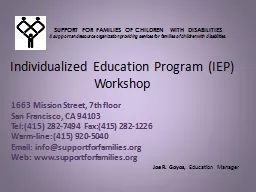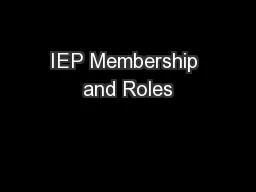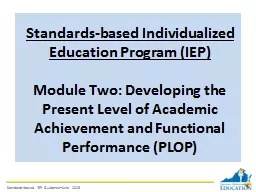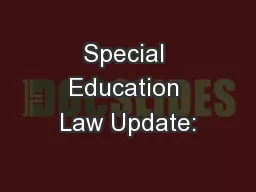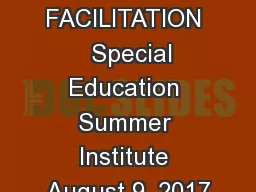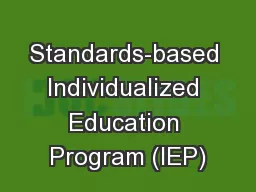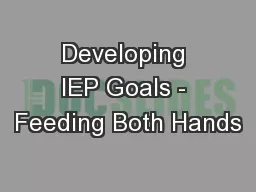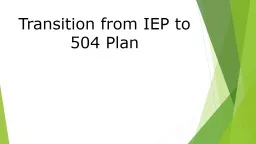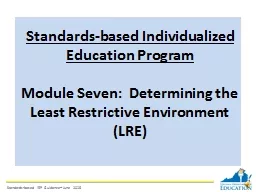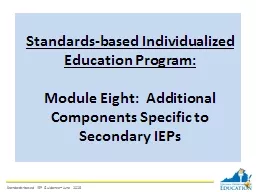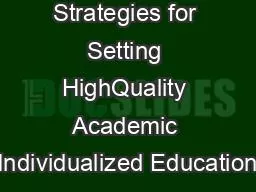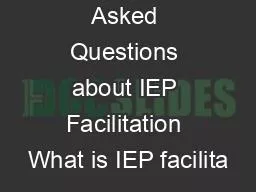PPT-Individualized Education Program (IEP)
Author : tatiana-dople | Published Date : 2017-09-15
Workshop 1663 Mission Street 7th floor San Francisco CA 94103 Tel415 2827494 Fax415 2821226 Warmline415 9205040 Email infosupportforfamiliesorg Web wwwsupportforfamiliesorg
Presentation Embed Code
Download Presentation
Download Presentation The PPT/PDF document "Individualized Education Program (IEP)" is the property of its rightful owner. Permission is granted to download and print the materials on this website for personal, non-commercial use only, and to display it on your personal computer provided you do not modify the materials and that you retain all copyright notices contained in the materials. By downloading content from our website, you accept the terms of this agreement.
Individualized Education Program (IEP): Transcript
Download Rules Of Document
"Individualized Education Program (IEP)"The content belongs to its owner. You may download and print it for personal use, without modification, and keep all copyright notices. By downloading, you agree to these terms.
Related Documents

